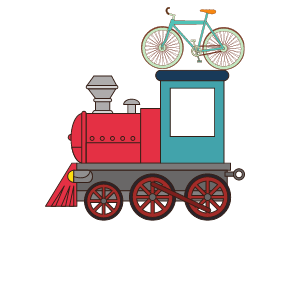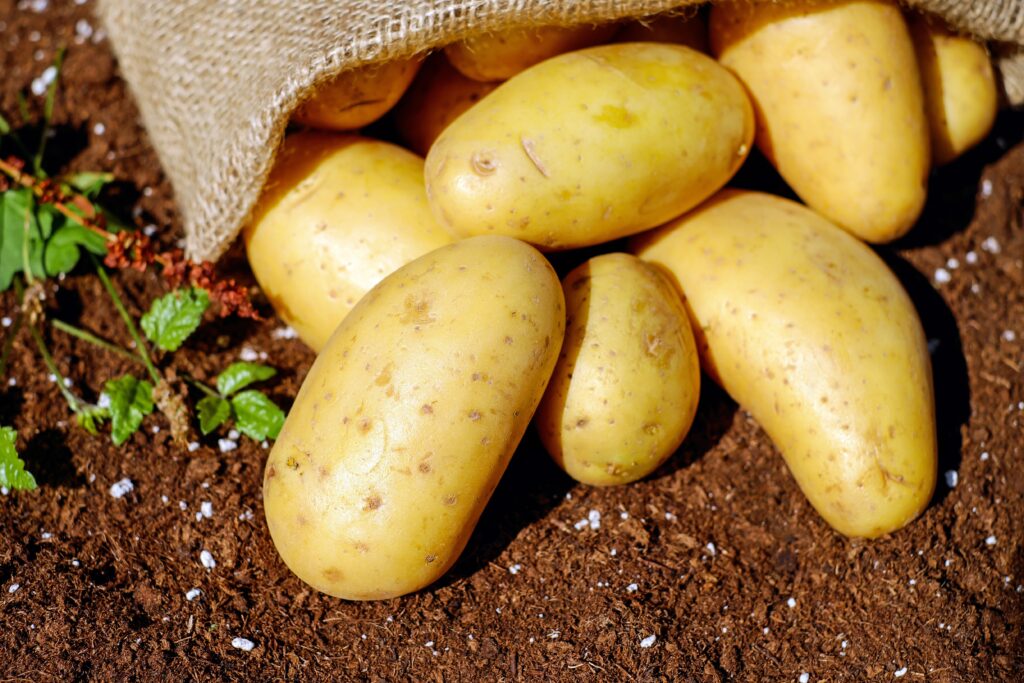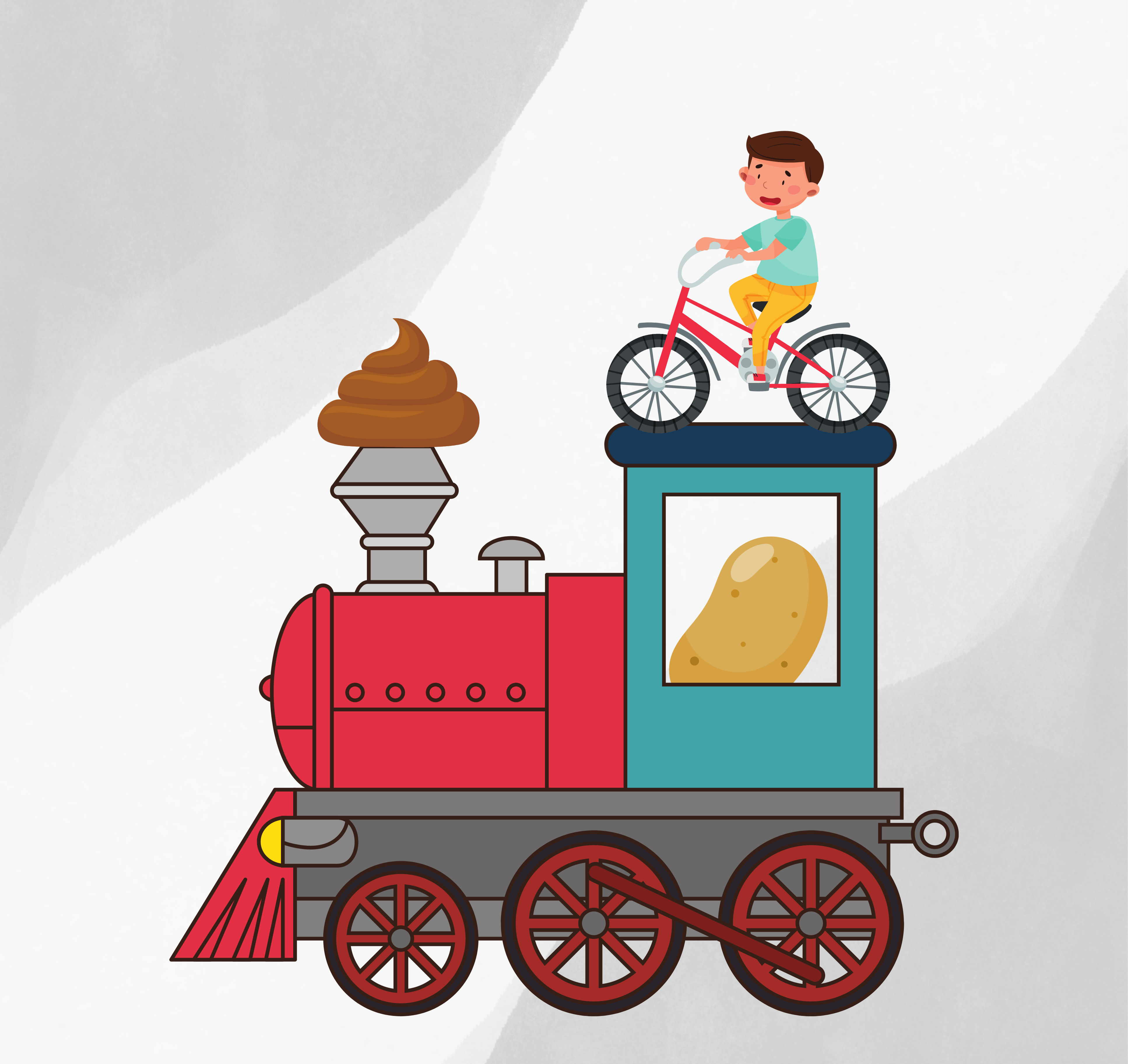What could the railways of the future be powered by? In this not-so-romantic blog, I explore some interesting methods we could use to power the railways of the future.
Table of Contents
On the surface the methods I’m going to talk about could look silly and unlikely to ever happen- but I assure you there is some logic in my madness.
Peddle Power
A handful of years ago I organised an event at work which included a pedal-powered cinema, this involved a set of modified bikes that turned on a projector when you were peddling- they were honestly incredible fun, just a little tiring.
I think we could use the same sort of peddling method to power our railways in the future!
Let me paint the picture…
Instead of just sitting on a train twiddling your thumbs you do some peddling. Of course, as a first reaction, this will sound outrageous, outlandish and bordering torture but please hear me out.
I’m of the mind that it would be impossible to solely power trains with just peddling- you had to peddle pretty fast on the bike to get the projector to work- so I imagine even a carriage of 50 people peddling as fast as they could, wouldn’t be able to move a single carriage, and certainly not at any great speed.
But what about passengers having a choice? When you sit down there’s a little ‘energy created bar’ and if you choose to pedal, the kinetic (movement) energy you convert through pedalling to electrical energy is measured on that bar.
The energy you transfer is put back into the electrical lines of the railway and depending on how much you fill on that little energy-created bar you will get a certain amount of discount off your train ticket, as you’re reducing your own personal cost of electricity.
Then consider the health benefits. We’re always hearing about us not being healthy and not getting enough exercise- what a worthwhile way to get more exercise. The rewards of peddling would be cheaper train tickets and healthier bodies- I’d call that a win-win.
What would you think of cycling a little bit on your train journeys in the future?
I think we should get the inconsiderate buffoons who don’t use headphones when listening to music or watching videos to do the peddling as a punishment.

Poo
Everyone on the planet poos, some people poo more than others but everyone does it. And where does that poo go? Literally down the drain. But what if we could use that poo for something greater? What if we could use that poo to power our railways.
You may have heard of a fuel source known as biogas. This is a renewable source of energy- this doesn’t mean it can be used more than once like solar or wind but we are always pooing so we will always have the potential to make biogas- and although it still produces carbon dioxide when it’s burnt it produces considerably less than when we burn fossil fuel.
Biogas is produced when bacteria eat human and animal waste and is mostly made up of methane- which comes out of a cow’s bottom as well. For a fancy word to remember this process is called ‘anaerobic digestion’.
You can burn this biogas to generate electricity. There are however limitations. You need the poo of 100,000 people to generate enough energy to power 3000 lightbulbs. I know what you’re thinking… that’s a lot of poo!
You might be surprised to hear that poo power isn’t a new idea and we already use chicken poo to generate small amounts of electricity in the UK. Pig poo is used to power farms in Australia and biogas plants (a power station) are fairly common in Asia and parts of Africa.
But how do we collect the biogas?
You get your poo, animal waste, and damaged crops along with water and food waste and put it in an Anaerobic digester- which is a controlled environment for the anaerobic digestion to take place.
The liquid and solid material leftover is known as ‘digestate’ and can be used as fertilizer. Whilst the biogas is burnt for heat and electricity it can also be “upgraded” into biomethane which can be used as fuel.
I’m sure you can already see the benefits of biogas and the potential poo has to power the railways of the future.
We waste around 30% of the food we buy each year, surely this waste would be better used to generate power rather than just being thrown away? I also don’t know about you, but I don’t plan on stopping to poo anytime soon so our potential supply of biogas is pretty much unlimited.
I think poo is the way forward, but what do you think?
Water
Another out-there idea of what the railways of the future could be powered by is water. Water could drive around a water wheel on the side of the train. My first thought is that we could just use rainwater.
I know it rains a lot in Britain but I’m not sure it would rain consistently enough to power the train- it would be awkward if passengers couldn’t get where they wanted to go because it wasn’t raining.
Water tanks were my second idea and the water could drain out of them to drive the water wheel around but the water tanks would need to go on top of the train which would present a problem when the train got to a tunnel.
Maybe this idea isn’t my greatest work.
Perhaps we could use wee as a substitute for the water?
Hot air
Random thought- could we generate electricity from the hot air which comes out of people’s mouths?
Potatoes
Okay, final (possibly) out-there idea. Could we power our railways using the one and only humble potato? Yes, you read that correctly. Potatoes.
If you haven’t seen it, I strongly recommend you check out my YouTube video where I made a potato clock.
The big issue with this idea is how little power can actually be harnessed from a potato. A potato can produce roughly 0.5 volts of power- or half a volt of power.
The power plugs in our homes (in the UK) contain 240 volts. That means it’s 480 potatoes to produce 240 volts for just that second. This works out to 28,800 potatoes for a minute’s worth of power in a plug socket and 1,728,000 potatoes for an hour- it’s a number bigger than I can say for a day (41,472,000) okay, it’s 41 million, 472 thousand…
As you can imagine this is an awful lot of potatoes when you consider that 41 million is for a day of power in a one single socket.
On top of this, the railways have more voltage in the lines above the track with a total of 25,000 volts. That’s 50,000 potatoes for a second of power in a tinee tiny section, 3 million for a minute and 180 million for an hour.
Where are we going to put all the potatoes? I think just looking at the sheer quantity of potatoes needed probably rules out my plan to power the railways with potato power- though I’m enjoying the image of having one carriage for passengers being followed by 20 or so carriages crammed full of potatoes.
I suppose the one positive of potatoes is that they are renewable- provided someone remembers to plant them.
We need to put our heads together and create a super potato which produces a larger number of volts.
So potatoes may never power the whole railways but could they power smaller bits of it? Charge your phone maybe?
I did read somewhere that boiled potatoes produce slightly more power- but I don’t think that’s going to help in this situation, even if it is true.

Wrap up
Ultimately, I do think electricity will be the main source of power for the railways in Britain as I, sadly, think the Maglevs are unlikely to ever come here because of the heavy infrastructure we already have in place.
Really, it’s the way we generate the electricity which will change- and who knows perhaps we will actually see potato power plants in the future.
I would love to hear how you would power the railways of the future in the comment section below.
What to read next
If you’ve enjoyed this not-so-romantic blog then here are some I think you would also enjoy.
